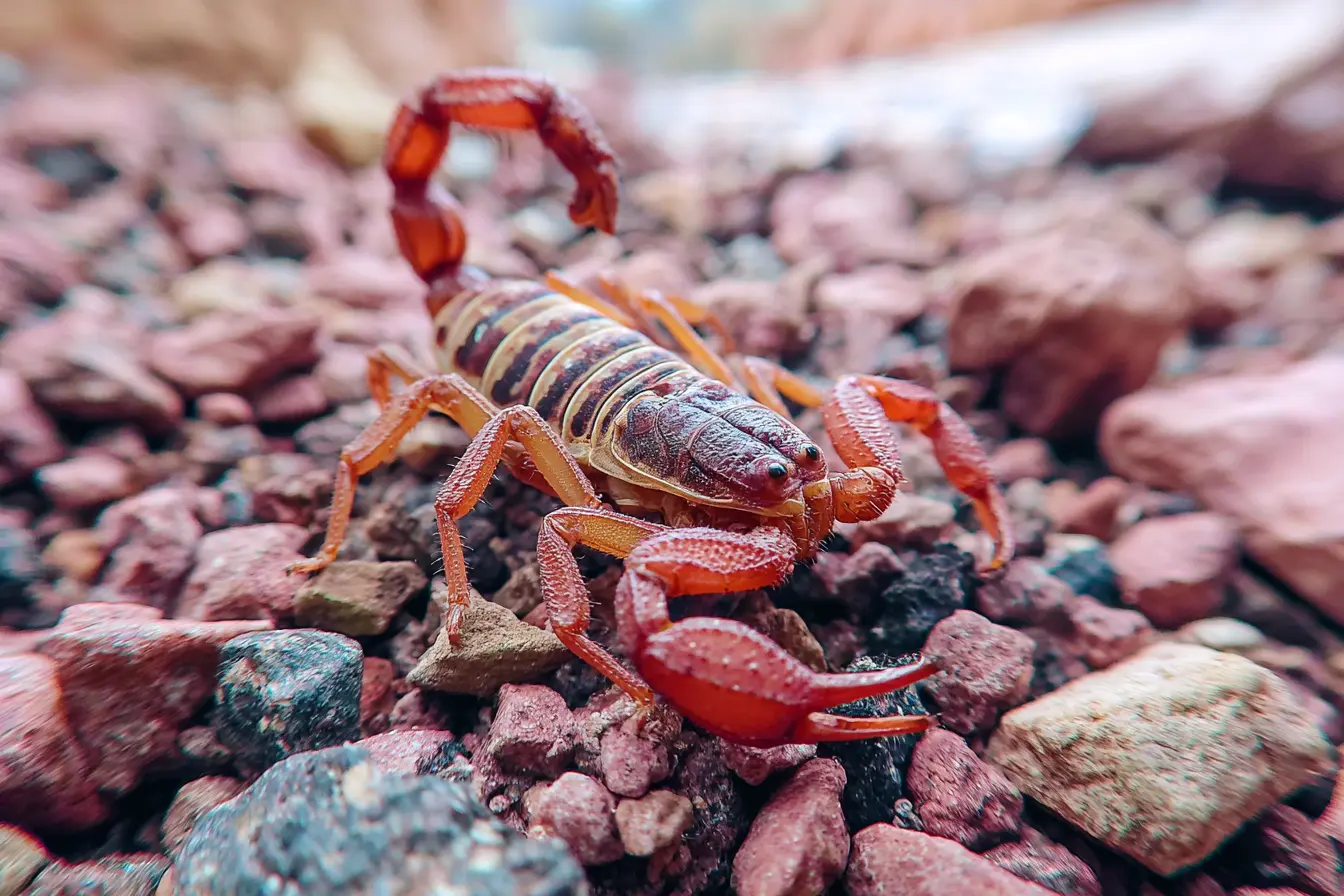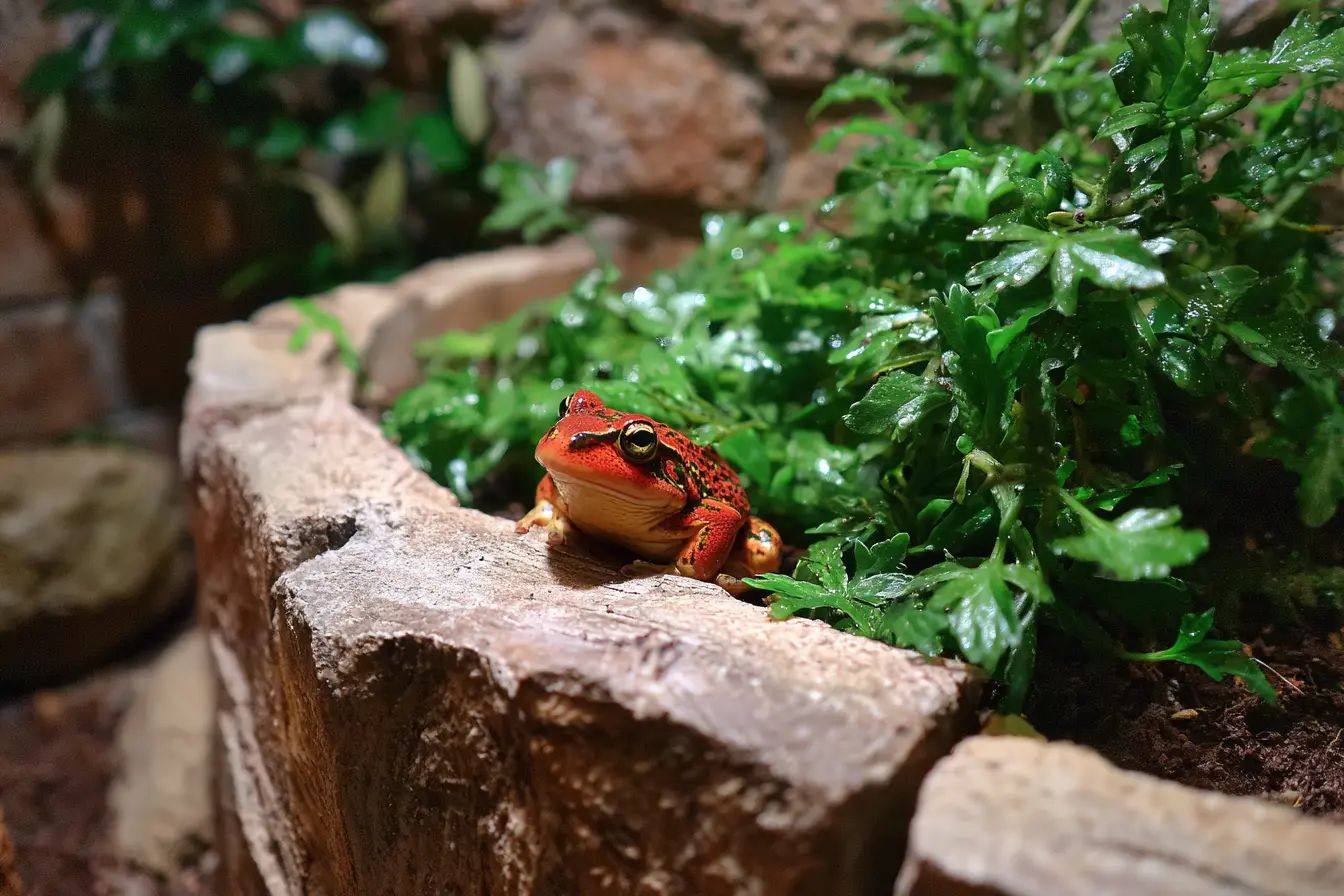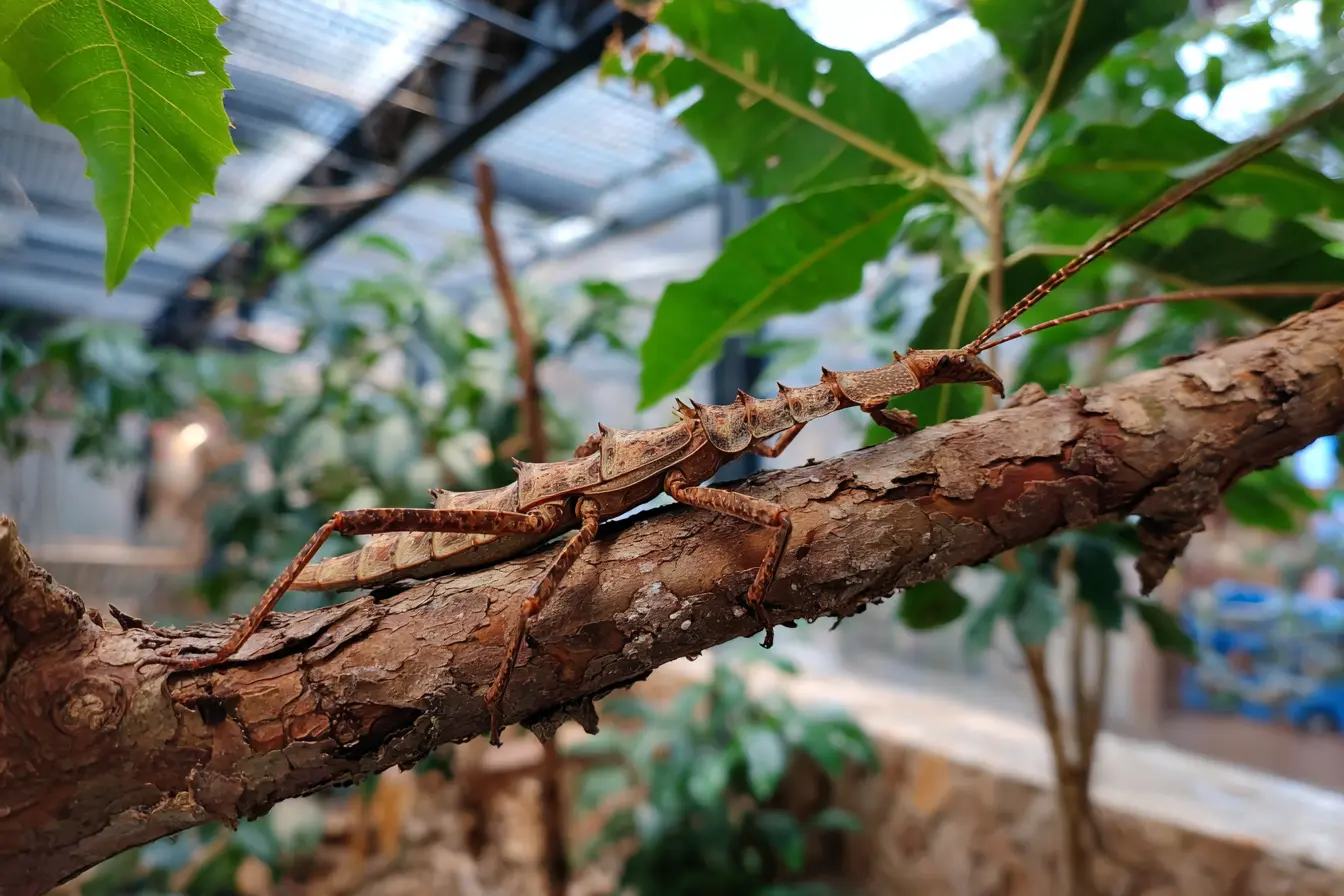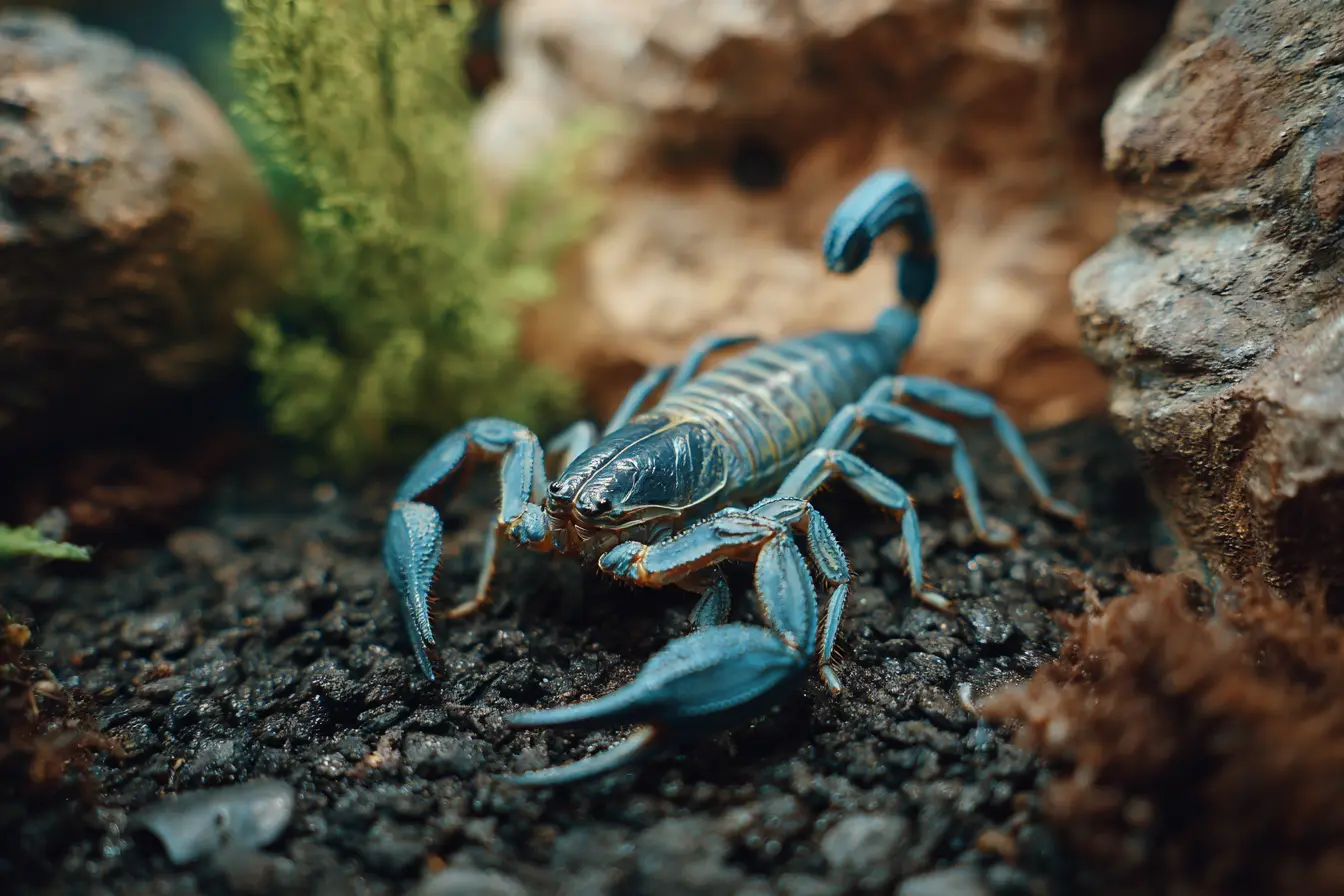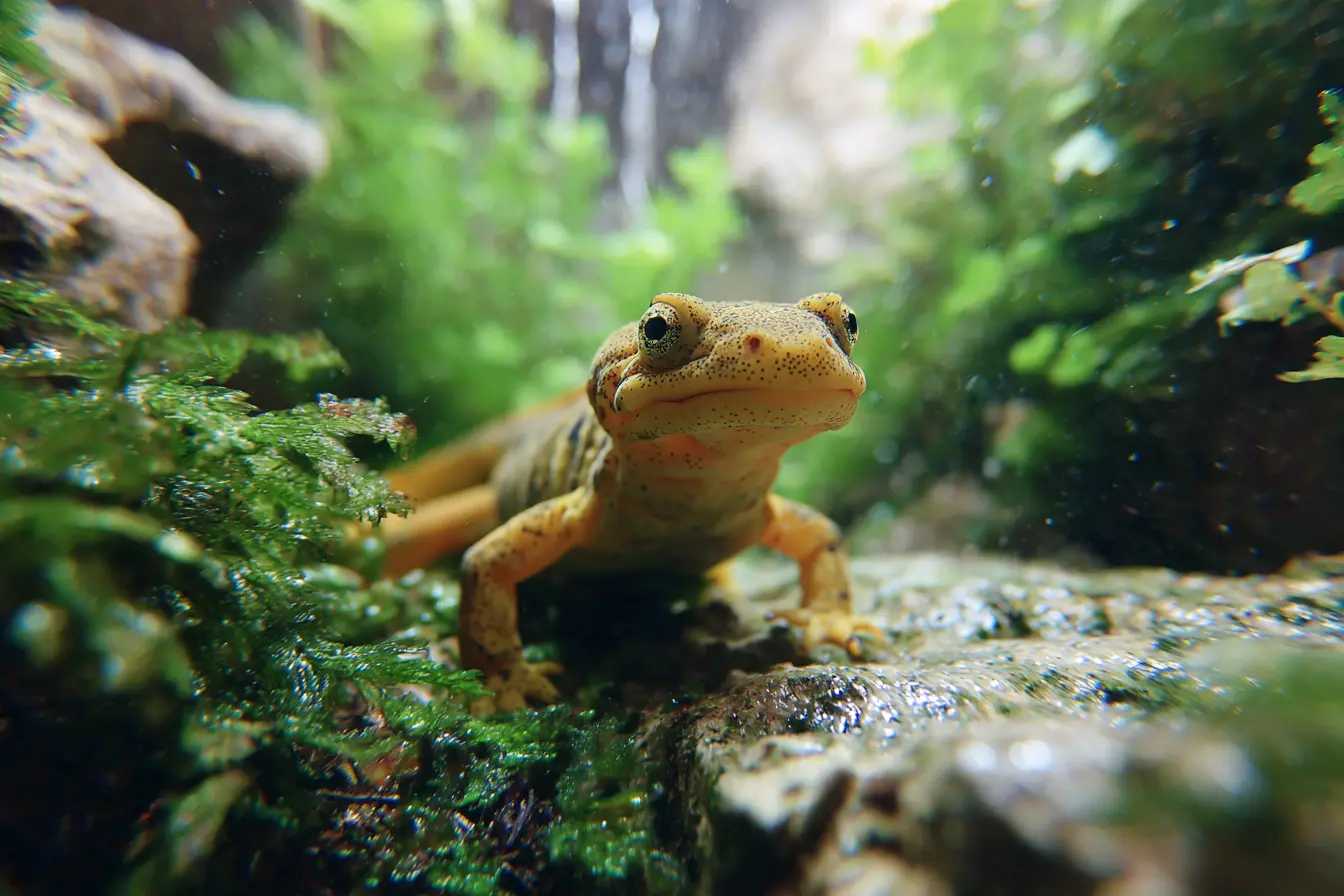
Keeping the Spanish Ribbed Newt
The Spanish ribbed newt (Pleurodeles waltl), also known as the Iberian ribbed newt, is a hardy and intriguing amphibian that has captivated hobbyists and researchers alike. Native to the Iberian Peninsula and parts of Morocco, this aquatic newt is best known for its remarkable defense mechanism: when threatened, it pushes its sharp ribs through its skin to ward off predators. Despite this dramatic trait, Spanish ribbed newts are relatively docile in captivity and make excellent pets for intermediate to advanced amphibian keepers.
This guide provides a detailed overview of the Spanish ribbed newt’s care, including housing, feeding, health, and breeding.
Physical Characteristics
Size
- Hatchlings are around 2 cm (0.8 inches) long.
- Adults reach 20 to 30 cm (8 to 12 inches), with females generally larger than males.
Lifespan
- With proper care, Spanish ribbed newts can live 10 to 15 years in captivity. Some individuals have even reached 20 years.
Colouration and Skin Texture
- Typically dark grey to brownish in colour, with some individuals displaying olive or golden hues.
- Their skin is smooth and slick, especially in fully aquatic adults.
- They often have small orange to yellowish nodules along their sides, which are the tips of their ribs used in defense.
Differences Between Males and Females
- Males tend to be slimmer with longer tails and more prominent cloacal swelling during breeding season.
- Females are stockier and often grow larger overall.
Legal Considerations and Ethics
Before acquiring a Spanish ribbed newt, consult local regulations, as amphibian import and ownership laws vary by region. They should always be obtained from responsible breeders or captive-bred sources. Wild-caught individuals are not only detrimental to wild populations but may carry parasites or diseases.
Housing and Enclosure Setup
Spanish ribbed newts are fully aquatic as adults and thrive in well-maintained tanks with plenty of swimming space.
Tank Size and Setup
- A single adult can be housed in a 75-litre (20-gallon) aquarium.
- A 110-litre (30-gallon) or larger tank is ideal, especially for groups.
- Ensure the tank has a secure lid, as newts are capable climbers.
Water Depth and Features
- Fill the tank with at least 20 cm (8 inches) of water; deeper is better.
- They prefer horizontal swimming space over vertical.
- Provide hiding spots such as PVC pipes, slate caves, and live or artificial aquatic plants.
- No land area is necessary for adults, but a floating platform may be appreciated occasionally.
Substrate
- Bare-bottom tanks are easiest to clean.
- Smooth river stones or aquarium-safe sand can be used if aesthetics are desired, but avoid gravel small enough to be swallowed.
Filtration and Water Quality
- Use a gentle internal or sponge filter to avoid strong currents.
- Perform weekly partial water changes of 25 to 50 percent.
- Keep water clean and dechlorinated.
- Maintain the following water parameters:
- Temperature: 18–22°C (64–72°F)
- pH: 6.5–8.0
- Ammonia/Nitrite: 0 ppm
Lighting
- No special lighting is required.
- A standard aquarium light is sufficient for visibility and live plant growth.
- UVB is not necessary but may offer health benefits if provided in low amounts.
Diet and Feeding
Spanish ribbed newts are carnivorous and benefit from a protein-rich, varied diet.
Suitable Food Items
- Earthworms (staple diet)
- Bloodworms (frozen or live)
- Blackworms
- Daphnia and brine shrimp (treats)
- Pellets formulated for carnivorous amphibians or newts
- Small pieces of fish or shrimp (occasional)
Feeding Schedule and Portion Sizes
- Juveniles: Feed daily with small portions.
- Adults: Feed every 2–3 days.
- Remove uneaten food within a few hours to maintain water quality.
Supplements
- Use high-quality, nutritionally complete pellets to ensure vitamin and mineral balance.
- Supplement occasional live food with calcium and multivitamins if the base diet is not pellet-based.
Handling and Behaviour
Spanish ribbed newts are display animals and should not be handled unless necessary.
Common Behaviours
- They spend most of their time swimming or resting on the bottom.
- May beg for food by coming to the front of the tank.
- Social species that can often be housed in groups, provided space and food are sufficient.
- Rarely display their defensive rib mechanism in captivity unless severely stressed.
Health and Common Issues
Generally hardy, but poor water conditions and improper diet can lead to health problems.
Common Health Issues
- Fungal infections – Often appear as white cotton-like patches on the skin or limbs.
- Bacterial infections – May cause redness, swelling, or open sores.
- Bloating – Could indicate infection or organ failure.
- Metabolic Bone Disease (MBD) – Caused by calcium/vitamin D3 imbalance.
Preventative Care
- Regular water changes and monitoring.
- Feed a varied, balanced diet.
- Quarantine new individuals before adding them to an established tank.
Breeding Spanish Ribbed Newts
Breeding is relatively straightforward in well-maintained tanks and is often spontaneous with seasonal cues.
Triggers for Breeding
- Cooling the tank slightly in winter followed by gradual warming in spring.
- Increase feeding during the pre-breeding period.
Mating and Egg Laying
- Males deposit a spermatophore on the tank bottom, which the female picks up.
- Females lay 100–300 eggs over the course of a few days, usually attached to plants or decor.
Rearing Larvae
- Eggs hatch in 1–2 weeks.
- Transfer larvae to a separate tank to avoid predation.
- Feed larvae infusoria, then baby brine shrimp, daphnia, and finely chopped blackworms as they grow.
- Metamorphosis occurs after several weeks to a few months.
Conclusion
The Spanish ribbed newt is a fascinating, hardy, and rewarding amphibian that is well-suited to aquatic tank setups. With proper care, clean water, and a nutritious diet, they can thrive for many years and even reproduce in captivity.
While not ideal for those seeking interactive pets, these newts make excellent display animals and are a great choice for amphibian enthusiasts looking for something a bit different. Their prehistoric look, unique defense mechanism, and ease of care make them a standout species in any collection.
Vets near you
Speciality vets
- Aquatics vet specialists
- Birds vet specialists
- Camelids vet specialists
- Cats vet specialists
- Cattle vet specialists
- Deer vet specialists
- Dogs vet specialists
- Equines vet specialists
- Exotic vet specialists
- Goats vet specialists
- Pigs vet specialists
- Poultry vet specialists
- Sheep vet specialists
- Small Mammals vet specialists
- Wild vet specialists
